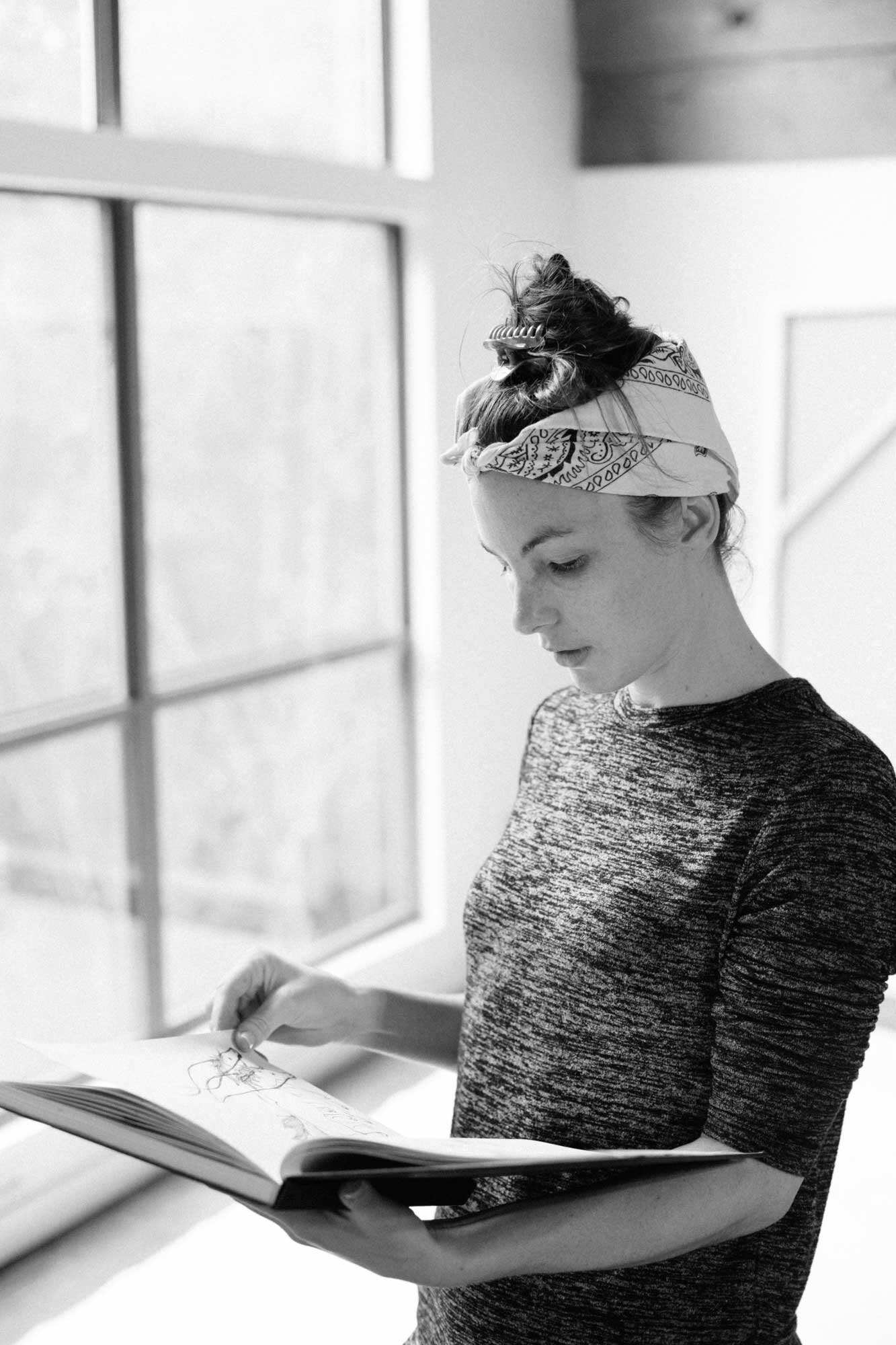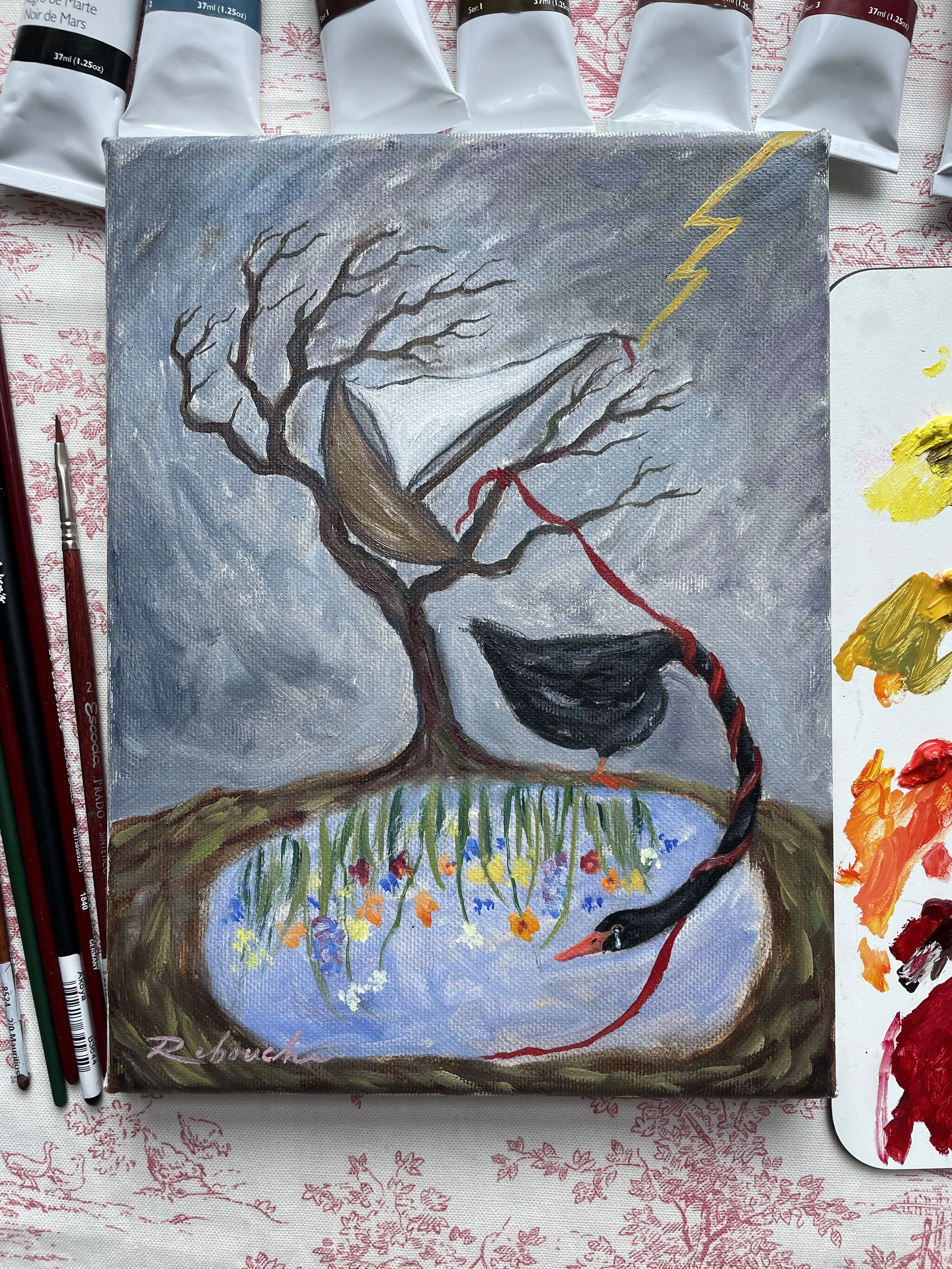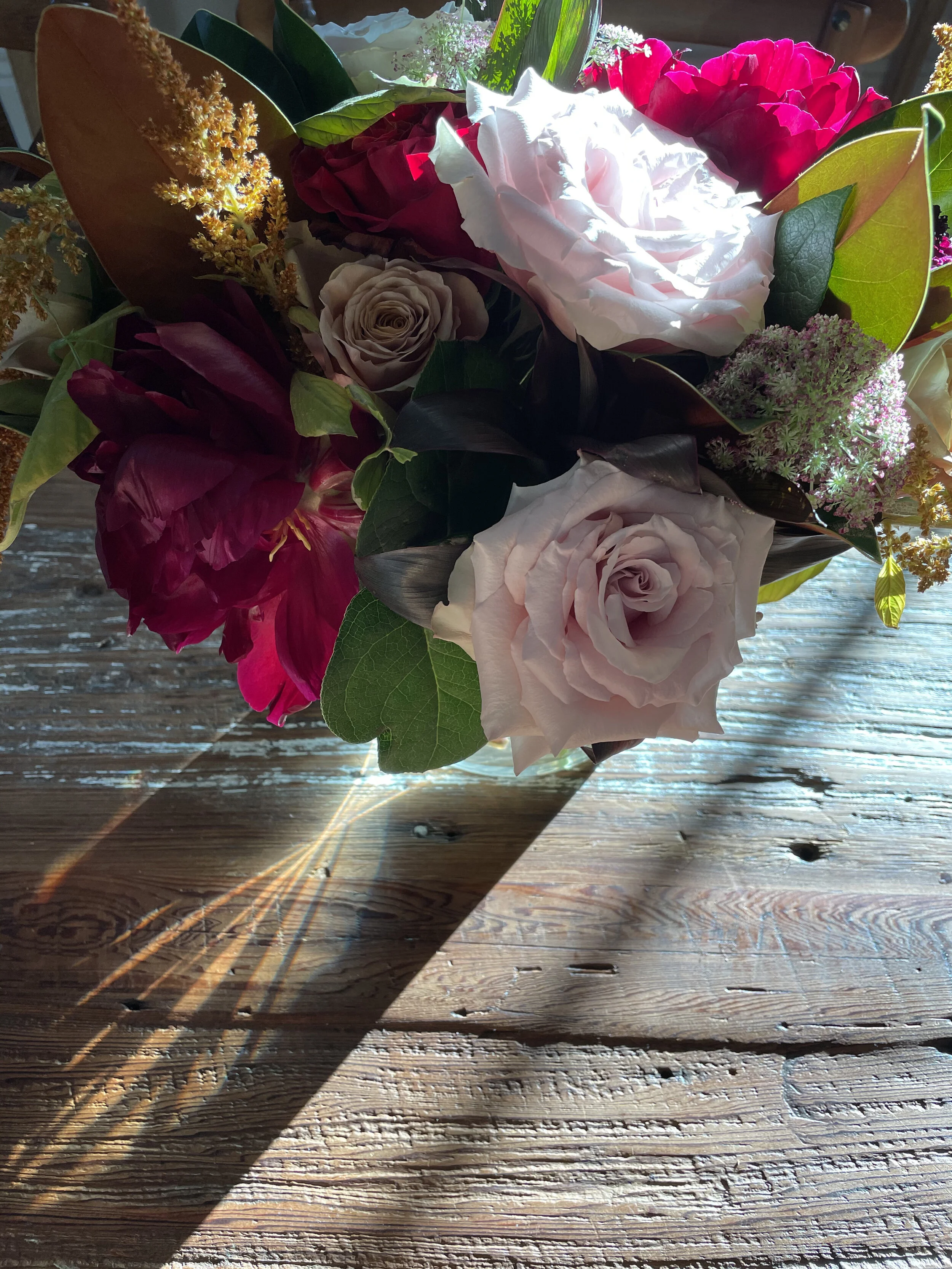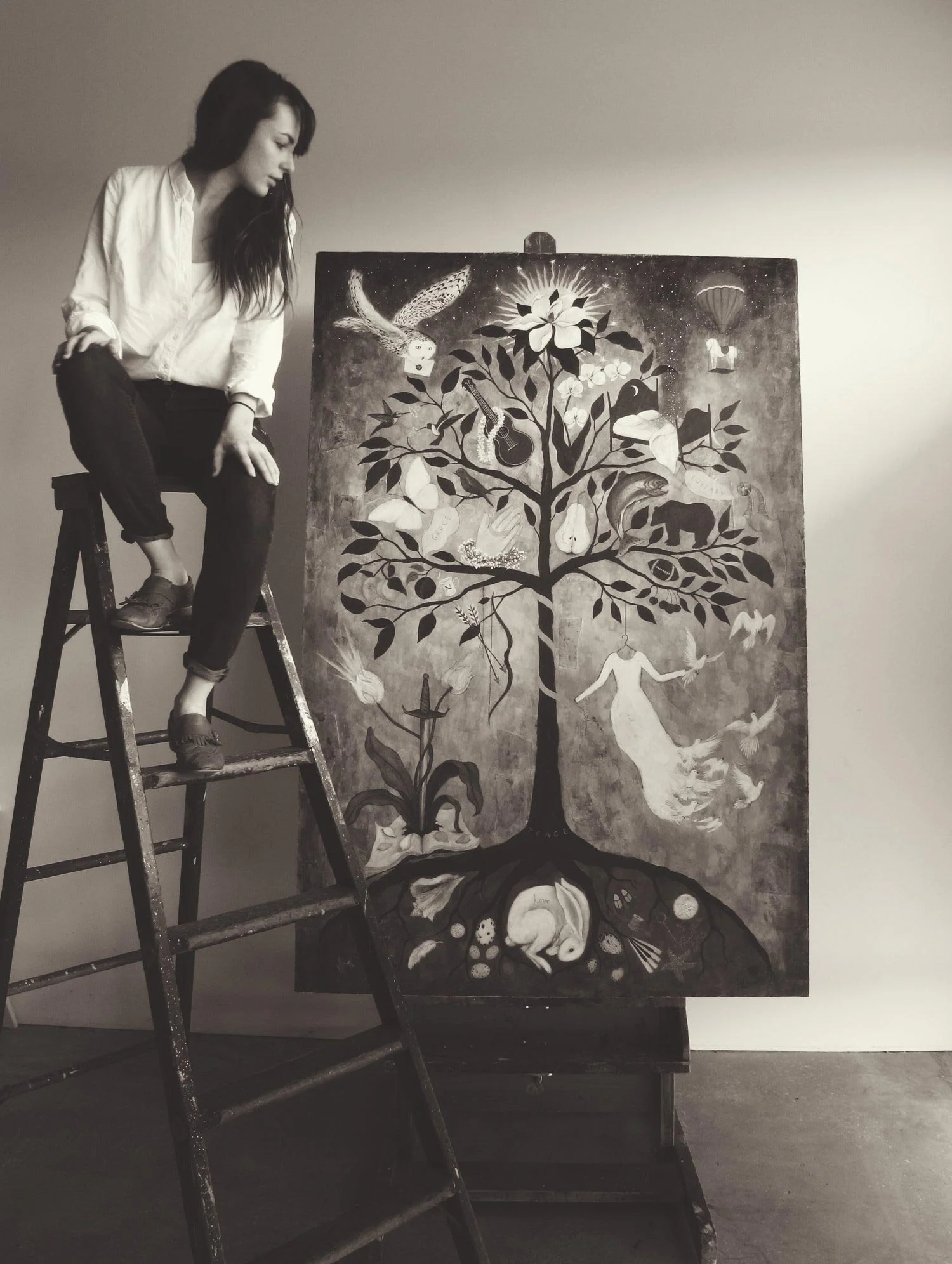Ask Rebecca: Doubt, Isolation, Failure
Q: How did you deal with self-doubt, isolation, and failure in the early days of becoming a professional artist? Do you still deal with those emotions in spite of your success?
Doubt, Isolation and Failure become early bedfellows when you become an artist. If you’re lucky you’ll get to know them and all the ways they creep in through the back door. I’ll address them one by one with sincerity and a dash of humor.
DOUBT
By far the most useful tool I found for dealing with doubt in my early days of becoming an artist was my practice of daily journaling. From the beginning I made a commitment to journal 3 pages every morning, even before I became a full-time artist and while I still had a “normal” job. I would wake up earlier just to have time to journal before work. And this journal practice is something I have maintained to this day, over 10 years later. The journal became my sounding board for every insidious doubt that crept into my head. I could release those doubts and fears onto the pages of my journal, and just the act of writing them down seemed to help me resolve some of those emotions. Even if you feel awkward or self-conscious keeping a journal, I recommend you push through that feeling until writing becomes as fluid as speaking. Keeping a journal becomes like keeping a relationship with yourself. It takes work if you want it to be any good, but it’s perhaps the most important relationship you’ll have in your lifetime and certainly the longest and most enduring.
Second to the journal practice as a way to alleviate and process doubt, would be reading certain books that speak to the role of being an artist. I took great comfort reading “The Artist’s Way” by Julia Cameron in my early days of becoming an artist. I read that book like a coursework, devoting a focused 12 weeks to working through every exercise in the book. I found it very helpful to get clear guidance on giving myself permission to actually BE an artist. This doubt, that we don’t “deserve” to be artists, is perhaps the most destructive doubt we can conjure up, and the most common. The faster you can harness the tools to arrive at that “permission” to be an artist, the sooner you can get on with doing the real work, which will propel you through doubt more swiftly than thinking about it ever could. For more thoughts on Doubt, read my related post, “Let’s Talk About Doubt.”
ISOLATION
I’m going to be honest with you now. Isolation is something I still struggle with. It’s perhaps the chief problem I have with my role as an artist and I’m still always contemplating ways to soothe the pain of isolation. The trouble is: we must be alone to make our work. Maybe there are exceptions to that rule, but by far it’s mostly true for every artist I know. The relationship with the self and one’s inner emotional world is the thing that drives the creation of art. Some degree of isolation is probably essential in order to tap into that inner world in a way that is authentic and powerful. There are plenty of creative fields that involve others in the creation phase, like film or performance arts. But the origin of those stories usually happened with someone working alone.
BUT! Isolation doesn’t always have to be negative. In fact it can be blissful when the ideas are good and the work is fluid and our creature comforts are satisfied. I can recall some of my happiest moments of creation in total isolation working away by candlelight in my treehouse with a bowl of soup in the winter, cozy socks on my feet and no one around me for miles and miles. Isolation allows us to manipulate time and space, creating expansion through our ideas and pushing the boundaries of reality as we tap further into the imagination. The imagination is a rich world which lives cleverly just beyond the veil of isolation.
The trick to converting isolation into pure imagination is arriving in that golden glow of “flow.” I’m sure you’ve heard of being in the flow. It’s the feeling you got as a kid when the hours passed like minutes, when your basic needs were met, meals and a cozy bed awaited you without thought or effort. You slipped into a state of pure creativity as you played make-believe or smushed a gluestick against some construction paper, living half in the real world and halfway in an imaginary one. The trick to pushing through isolation is to know that that blissful world of pure imagination awaits you on the other side of the looking glass. You want to get yourself into that world as often and as quickly as possible.
The part of life that makes this really difficult is “Adulting.” The minutia of adult life will literally steal from you every possible portal you’ve created to this other world. And when you get stuck in between worlds is when Isolation becomes this looming BEAST that traps you in a cyclical despair. So, think of ISOLATION as the portal, purgatory, event horizon, etc. You want to move through that portal at hyperspace. Think of reality and imagination as different planets in different galaxies. Don’t get trapped in between planets traveling at the pokey pace of the speed of light. You’ll never get into the flow of creation if you hang out in the interim too long. It will feel like ISOLATION rather than CREATION, and that’s just plain sad.
Those are my philosophical thoughts on isolation. Now for some practical advice.
We are human beings, not human thinkings. We were meant to interact with other human beings and experience an exchange of “being” out in the world. We no longer have to band together to hunt for food, but we may as well think of it that way. When you spend all of your time isolated and in your head, you become too separate from reality for healthy thought processes and a healthy body. There’s a reason baby monkeys who are raised in isolation never become healthy adult monkeys.
So, brass tacks: My general rule is “Interact with another human at least once a day.” If you live with someone or have a normal job, this will be built into your day. But if you DON’T, then you’re going to have to make an effort. Some elements of being an artist can happen in the presence of others. For example, I’m writing this in a coffeeshop. Sure, I could save the three bucks and write it at home, but I need to be alone later when I’m painting, so I make it a priority to get out and be around other people when at all possible. I’m not trying to carry on a conversation with anyone while writing, but just being around living breathing people helps my brain know which way is up. And that’s half the battle.
Second piece of brass tacks: Social Life. If you are going to commit to a life and career as an artist, then you and only you will have to make it a priority to have a social life outside of your work. For other people, its easier, there’s work hours and “happy hour”. They have bosses and coworkers and weekends. You do not. And you won’t. And no one is going to come along and give you permission to have a healthy social life. You’re going to have to do it yourself. So make it a priority. Make plans. And see them through. And when it’s not “social” time, make damn sure you’re doing your work, so that you can actually be free the next time you do have an opportunity to socialize. Interacting with other humans is not “extra”, it’s a natural and essential aspect to being a human being and one you must defend. (I have to remind myself of this ALL the time.)
Okay, lastly, some thoughts on isolation specifically in the early days of my career. The beginning is particularly lonely. I’m not going to lie. In the beginning you must carry the vision all on your own. You don’t have fans or clients yet. You probably don’t have many colleagues or contemporaries and you don’t have professional relationships with galleries or companies yet. It’s a really lonely time when you are building your business and honing your style.
So, the best advice I have is to think of it like building a ship. You must toil away on your ship, in isolation, by yourself, at least until it can hold water. At least until you have something to show for yourself. Keep that “debut” as a diamond in your mind. Your first show or big commission or opportunity will be your chance to share with the world what you’ve been working so hard on. I straddled a “real job” and toiling away on my art for at least 6 months before I got relief. Those were lonely nights, when everyone else was “playing” after work, I was off to the studio to paint until midnight and then do it all again the next day. I was lonely and full of doubt. But I set a “deadline” and I knew it wouldn’t be that way forever. That’s my best advice. Just know the isolation is somewhat temporary. But you must endure it in the beginning. You need to develop your voice, your style and create in a way only you can. And I think you do that by blocking out everything else. Eventually when you’ve amassed a body of work, you’ll share it with the world and some of that loneliness will lift as you start to interact with others about your work.
In my early days I kept a blog to alleviate loneliness. But I would caution you against relying too greatly on social media to validate you and alleviate your isolation. Remember the metaphor of isolation as a portal to your imaginary world. Think of social media as a tether into reality. Every time you tap into social media you bring yourself back through the portal, back through the hole, into the place of “Non-Flow”. Real life (and social media life) has its place, but it is not creation. And you can’t hyperspeed back and forth between the two, a bajillion times a day, with any amount of grace. Checking in with social media will indeed relieve your icky isolation, but so will creation. And creation is where you want to be. By all means, when the creation is done, share it on social media and bask in the glow of likes and comments and let it propel you forward. But not a moment before my dear. Not a moment before. I’ll address more thoughts on social media in a future post.
Failure
Let me start by saying I’m not a huge fan of this word. In fact, it might be a non-word. An illusion. A word that ALWAYS means something else. When we say failure, do we actually mean disappointment? When we say something was a failure, do we mean we lost money on it? Do we mean that no one liked it? Or that we didn’t like something we created? When we say failure do we mean a project was late, or we experienced so much crippling doubt and fatigue in the creation of it that it robbed us of any joy? When we feel like a failure, are we really experiencing fear, doubt, insecurity?
Failure seems to me to imply that there are definite end-dates when things are determined a success or a failure, and this is the biggest illusion. We get ideas about how we will measure our success, and usually if we experience feelings of failure, it’s because our measurements for success are out of sync with all the factors in the known universe. Success may be coming. It may come in a different form than we anticipated. Something that appears to be a failure may indeed be the biggest blessing we can’t see yet. For this, nothing works better than cold hard evidence.
So, I’ll tell you a story. One of my biggest successes came out of one of my biggest failures. I started my career as an artist alongside a guy I loved, a fellow artist. I learned the ropes from him and got my start with his help as a companion, teacher and friend. When suddenly one Spring day, he told me he didn’t want to continue in the relationship. In one fell swoop I lost my studio space and suffered the deepest heartbreak I had ever known. But I had a show coming up. I had applied to show at Jazz Fest in New Orleans and I had a booth to fill with artwork. By all means I had to buckle down and create. On top of everything, I was also broke. Broke, broke, broke! I remember eating peanut butter and jelly sandwiches that whole season. I rented a room in a woman’s house that she kept for her 20 cats and used it as a makeshift studio, keeping my brown bag lunch in the kitchen fridge which I got to by tip-toeing through a sea of litter boxes. It was not my best moment. But I needed to paint, and to process my heartache. And I NEEDED to make money. At best I would survive til the fest on PB&J sandwiches and borrowed time.
Well, I painted my little heart out in that cat-studio and amassed a large collection of paintings that I called “Lay Your Burden Down.” I rented a van to transport my stuff to the fest, using the last remaining $300 credit on my credit card. And I crossed my fingers as I set up my work and hoped for a successful weekend. I desperately NEEDED to have a successful show, and that did NOT happen. I made a few sales, enough to pay back my landlord, but then it proceeded to rain cats and dogs, up to my knees, flooding my booth at the festival. I remember how laboriously I loaded all the unsold paintings back into the van on the last day, and then cried the whole way home by myself. I was screwed and I knew it. I felt unloved, unsuccessful, tired and downright depressed.
BUT, fast forward to the next day, I got a call from a friend that a company called Anthropologie was coming to town with a handful of buyers looking for fresh talent in New Orleans, and did I have any work to show? Yes, I’m serious. This is how I met Anthropologie. My friend (and client) set it up so that I could hang my paintings in her house to show the buyers from Anthro. But, to do so, I would have to EXTEND the van rental that I already couldn’t pay for. I had some really big pieces in that collection and they were some of my best work to date. So, on a wing and a prayer, I extended the van rental, shlepped all my paintings over to her house and hung them up for the meeting. And, as you already know, the rest is history. Six buyers from Anthro became my new biggest fans and 5 of them bought paintings for their personal collections right there on the spot. And I mean big ones too. Suddenly, I had the money to pay back the rent, the van, and my mother. And I had my first big client. Anthro proceeded to commission a large painting for their New Orleans store, and then the following fall we entered talks to create my first collection of dinnerware. Essentially my world was forever changed. And my failure turned into a massive success.
And here’s the kicker: IF I had had a “successful” Jazz Fest that weekend and sold out of everything I would have been “happy” in that moment, but I would have had nothing to show to the Anthropologie buyers. IF I hadn’t been heartbroken and broke, I may have never created so much powerful work that became my meal ticket to what is now a ten year relationship with the brand. IF I had been too scared to extend the van rental with money I didn’t have, I wouldn’t have shown and then sold some of my largest work and probably wouldn’t have gotten the commission for the New Orleans store.
The point is, all my failures in that instance added up to my greatest success. So even when you’re painting in a cat house and crying your broke ass heart out rejected and tired and hopeless, just know that you are being prepared for greatness in some way. It won’t happen for you in exactly the way it happened for me, but it definitely won’t happen if you decide that failure is real and that there’s some bogus day that it is decided. Failure is not real, And there is no end-date that it becomes real. End of story. Hugs.
More Dear Young Artists
↓







